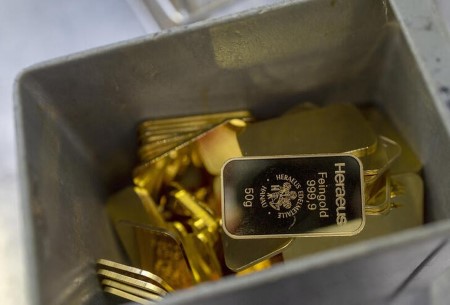




Monthly Economic Update: One for the road
 DOWNLOAD
DOWNLOAD

Inflation Update: Still low, still slow
 DOWNLOAD
DOWNLOAD

Philippines Trade Update: Exports momentum continues
 DOWNLOAD
DOWNLOAD


Gold gains as dollar dip offsets some pressure from rate hike bets

Sept 9 (Reuters) – Gold rose on Friday as the dollar’s retreat temporarily seemed to stave off some pressure on the precious metal from prospects of more interest rate hikes.
Spot gold rose 0.5% to USD 1,716.30 per ounce by 1:55 p.m. ET (1755 GMT), after rising to its highest since Aug. 30 earlier in the session. US gold futures settled 0.5% higher at USD 1,728.6.
The yellow metal was on track to rise 0.3% for the week, its first weekly rise in four.
“The US dollar index really dropped sharply overnight and that has supported the gold and silver markets. Also seeing some short-covering in the futures markets heading into the weekend,” said Jim Wyckoff, senior analyst at Kitco Metals.
The dollar dropped to a more than one-week low against its rivals, making greenback-priced bullion cheaper for overseas buyers.
However, the gold market continues to see a slow and steady reduction of exchange-traded funds (ETFs), and trading volumes on US futures markets continue to weaken, suggesting that the move higher is unlikely to be sustained, said independent analyst Ross Norman.
Investors now await US inflation data for August due early next week after recent hawkish comments from Fed Chair Jerome Powell cemented bets of a large rate hike.
“If consumer prices come in hotter than expected, gold might see selling pressure target the USD 1,680 region” and a sharp deceleration with pricing pressures might only provide a modest boost for gold, Edward Moya, senior analyst with OANDA, said in a note.
Higher interest rates increase the opportunity cost of holding non-yielding bullion.
In the physical gold market, demand in some Asian hubs remained firm this week amid lower prices.
Silver rose 1.2% to USD 18.79 per ounce and was set for a weekly gain.
Palladium gained 2% to USD 2,182.18 per ounce and was headed for its best week since July.
Platinum inched up 0.1% to USD 879.83 per ounce and was on track for its biggest weekly gain since early June.
(Reporting by Brijesh Patel, Arundhati Sarkar and Arpan Varghese in Bengaluru; Editing by Vinay Dwivedi and Shounak Dasgupta)
This article originally appeared on reuters.com





 By Reuters
By Reuters